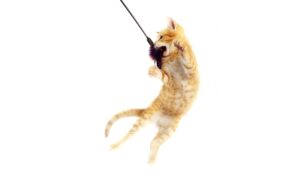Retailers Need to Connect With Customers
Glenn Polyn //July 1, 2020//
With most states opened back up for business and customers being more willing to go out to shop, pet business owners are finding it takes flexibility, patience, and understanding customers to adjust to the “new normal” that COVID-19 has created for them.
Distribution Issues
One of these adjustments has been dealing with shipment delays and certain products being unavailable. Although many retailers say these issues haven’t had a huge impact on their business or customers, some are having more trouble.
“Changes in order dates and delivery dates have made it difficult to staff properly,” said Nancy Bleznak, owner of Medford Pet Supplies in Medford, New Jersey, noting she has had sporadic issues with receiving products from her distributors. She said another difficulty has been changes in some distributors’ policies, such as one of her distributors who doubled the minimum order and added a delivery charge.
However, whether it’s substituting another product or sourcing a specific product from another distributor, retailers are ready to do what it takes to keep customers happy. Patti Carter, owner of Patti’s Pet Depot in Houston, said she’s had some issues getting certain products because many of them come from China, but she hasn’t had a lot of unhappy customers as a result. “Customers seem to be more understanding now. They know it’s not our fault when we can’t get something in.” She said some customers are willing to wait and some are happy to accept a substitution.
Sales Being Impacted
Claire O’Brien, owner of Castleton Pet Supply in Castleton, Vermont, said she always pays close attention to patterns of customer behavior, which she feels is a reason why her clientele is so loyal to her and her business.
“I’m cautious about what I order and how much, so I haven’t had much issue with running out of things that my customers need. Everything is about people’s patterns, and I watch those and determine how they are going to affect my business,” she said, adding that most customers are only buying food right now and not toys and treats, which have higher profit margins. “People are just focused more on the basics right now.”
Bleznak echoed O’Brien’s experience and is also finding that customers are only purchasing food and not the higher-profit margin items like toys and supplies, but she said it’s understandable.
“People are out of work and many of them don’t have the disposable income they had before to spend on extras,” said Bleznak, adding that sales were good pre-quarantine as people stocked up on pet food, but a few weeks into the quarantine, sales dropped off. “Each week though, we’ve seen a slow and steady increase in sales which I think will continue. We’ll just have to wait it out.”
Carter noted that business has been down, but has been gradually coming back each week. She said her business has faced difficult times before, from extensive construction around her business that impacted sales to Hurricane Harvey which devastated the Houston area in 2017 and caused her to lose about half her customers. “We’ve been through crises before and we’re still here.”
She said her grooming customers were amongst the first to return and will remain loyal.
“I truly have really great groomers and customers who are very loyal to them,” Carter explained. “I also feel people have really tried to be supportive of small businesses and we all need to just keep moving forward and focusing on what we do well.”
Adapting to Change
Many retailers adjusted their hours under the “stay at home” orders during the pandemic. Carter said she has adjusted hours to allow her staff to properly sanitize the store and as a reflection of when people were shopping. O’Brien has found a big change in the time of day that people are shopping as compared to before COVID-19.
“It used to be that between 4 and 7 p.m. were my busiest hours,” O’Brien recalled. “Now people are coming in all hours of the day.”
Bleznak said that her busiest hours before COVID-19 were during the after-work hours between 5 and 6:30 p.m. Now she’s finding just a few people coming in during that timeframe because many people are still not going to work.
“We thought about cutting back hours because we had so few people coming in during what used to be a busy time, but then I thought, even if just one customer comes in, I need them to know that I’m here for them,” she explained. “I’m not bailing on them.”
Retailers have also noticed a wide variation in customer habits when it comes to their own personal health and safety.
“We’re doing everything we can to keep not only our customers, but our staff safe; from lines on the floor for social distancing, sanitizing everything in the store frequently, and requiring customers to wear masks when they come in the store,” Carter said. “However, we definitely have two distinct kinds of customers; those who are still only doing curbside service now even though they could come in the store and those who will walk straight into the store without a mask and don’t seem like they’re worried about anything at all.”
Tim to Shine
So much has been written to prior to COVID-19 about the tremendous advantage big, online retailers have over small local businesses, the biggest being their ability to get product to clients as soon as the next day. With the shipping slowdowns many of those retailers have been experiencing in the past months, now is a prime opportunity for small retailers to regain a little market share back. A big advantage small retailers already have is their ability to provide better service and pet nutrition and care expertise. Those who already had or have recently added online ordering, same-day delivery or curbside pick-up, can now add speed of service to their list of advantages.
Retailers are also finding an advantage in the fact that customers are more grateful and supportive that small local businesses exist than ever before.
Although she said she can’t predict exactly what’s going to happen in the next few months, Bleznak feels like this support of local, small businesses will continue long after COVID-19 is no longer a daily headline.
“We’re getting a lot of customers saying, ‘Thank you so much for being here and for being open,’” Bleznak explained. “They appreciate what we do for them and how important small businesses are to the community… We’ve built a camaraderie together and helped each other, which has built a connection and relationship with our customers that is stronger than ever.”



















